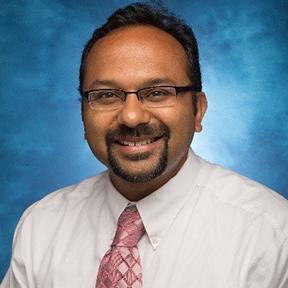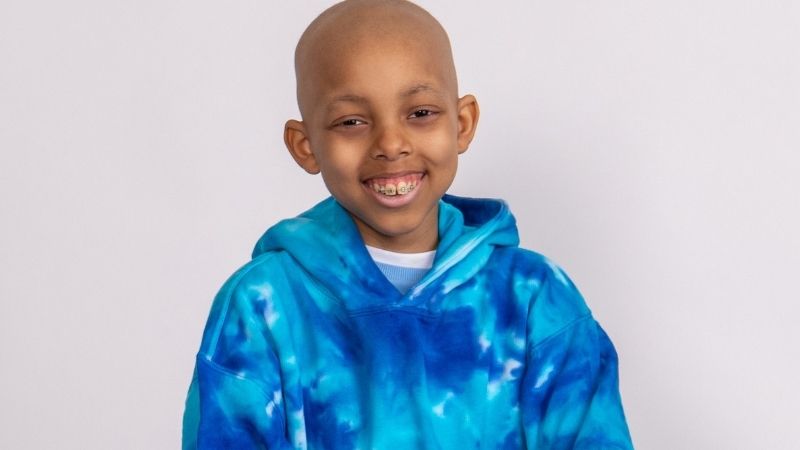The emergency department at Miller Children’s is specially designated by Los Angeles County as an Emergency Department Approved for Pediatrics (EDAP) to care for children. There are certain regulations and criteria that must be met by the entire health care team, including physicians, physician assistants and nurses. The Joint Commission requires the following standards for physicians:
- 24-hour coverage of the emergency department by at least one board-certified/eligible physician with either certification in emergency medicine or pediatric emergency medicine.
- All full- or part-time emergency physicians have completed of a minimum of 16 hours of continuing medical education in pediatric emergency topics within a two-year period.
- At least one physician is on duty in the emergency department 24 hours a day.
- Telephone consultation with a physician who is board-certified/eligible in pediatrics or pediatric emergency medicine is available 24 hours a day.
- A backup physician who has EDAP qualifications and training is available to the hospital within one hour after notification to assist with critical situations or disasters.
As an Emergency Department Approved for Pediatrics (EDAP), the emergency care team is certified in Pediatric Advanced Life Support (PALS). All members of the Miller Children’s pediatric emergency care team go through this advanced training course.
The American Heart Association has an advanced training course for health care professionals who treat critically ill children, called Pediatric Advanced Life Support (PALS), which is especially beneficial training in the emergency department. The course is designed to teach pediatric health care providers to efficiently and effectively manage the care of critically ill infants and children, resulting in improved outcomes.
The goal of the PALS course:
- Recognize infants and children at risk of cardiopulmonary arrest
- Develop a systematic approach to pediatric assessment
- Learn defibrillation and synchronized cardioversion
- Learn intraosseous access and fluid bolus administration
- Learn strategies needed to prevent cardiopulmonary arrest in infants and children
- Learn skills needed to resuscitate and stabilize infants and children in respiratory failure, shock, or cardiopulmonary arrest.
The course is based on science evidence from the 2005 AHA Guidelines for CPR and ECC.
In 2007, along with Long Beach Memorial, Miller Children’s was awarded a National Bioterrorism Hospital Preparedness Program (NBHPP) grant. If a natural or manmade disaster were to occur, that impacted a large number of children and their families, Miller Children’s would lead in the coordination of pediatric care in the area in response to the incident.
The Disaster Resource Center (DRC):
- Provides information and assistance for other hospitals to treat pediatric victims that arrive at their location in response to a large-scale incident
- Facilitates disaster preparedness plans and enhances cooperation in Los Angeles County, to include planning for pediatric surge capacity
- Enhances the community's ability to respond to and address pediatric needs
The Disaster Resource Center (DRC) concept promotes, plans and mitigates cooperation and collaboration with Los Angeles County agencies, hospitals and other health care entities with LA County EMS Agency as a conduit. There are 13 other DRC’s in Los Angeles County.
In partnership with Long Beach Memorial, Miller Children’s participates as a paramedic base station hospital. Miller Children’s is one of the only free-standing children’s hospitals in Los Angeles and
Orange Counties to serve as a paramedic base.
Paramedic base hospitals allow emergency physicians and mobile intensive care nurses to communicate with paramedics via radio, to assess patients before they arrive in the emergency department 24/7.
More than 1,000 paramedic calls are handled each month by both hospitals.
Continuing education, quality improvement programs and specialized paramedic training programs are provided for all paramedic units that are assigned to them.
Miller Children’s is one of the few centers in the region that specially train paramedics in pediatric emergency care. Paramedics-in-training receive a multi-disciplinary experience that takes them beyond the emergency department and into situations that train them to be skilled and knowledgeable when caring for children.
Paramedic students work with the Neonatal Intensive Care Unit (NICU) and Pediatric Intensive Care Unit (PICU) where they learn to care for critically ill newborns and children. Back in the emergency department, students interact with patients and their families as well as practice what they learn on mannequins. Usual training lasts for three days, each day consisting of at least four hours.
Miller Children’s Emergency Department has trained students from UCLA’s Daniel Freeman Paramedic Education Program, Paramedic Training Institute, El Camino and Mt. SAC colleges, the Long Beach
Fire Department and Seal Beach Lifeguard Department.
For Parents
The doctors will ensure that your child’s special health care needs and family concerns are addressed and an individualized care plan is established based upon the contributions and recommendations of the care team, child and family. The emergency care team will ensure that families are an important part of the treatment process and work closely with you. Patients and families gain peace of mind as they become familiar with the health care team and understand what is happening to their child.
Patient and Family Education
Your child’s pediatric emergency physicians provide education relative to the diagnosis, treatment and management of your child’s condition. The nurse specialist can offer education and instruction in specific treatments or procedures, growth and development, health and nutrition and general physical health.
Ask a member of the care team if there are any educational materials you can bring home to learn about your child’s illness and how to manage it or visit the Health Library. There are also special educational materials available to you in the Family Resource Center.
Should I take my child to the emergency room?
Many minor injuries can be handled at home. If your child has minimal symptoms, without a fever or a low temperature, it is probably best to seek care at your child’s primary care physician’s office or at an urgent care. You will most likely be treated faster and still get the medicine you need for your child.
However there are times when a visit to the emergency room is necessary. Take your child to an emergency room after an injury if you think the problem requires immediate attention. This includes:
- Puncture wounds
- Seizures
- Animal, snake or human bites
- Severe bleeding, pain or burns
- Head, spinal cord or eye injuries
- Signs of allergic reaction such as swelling of the face, lips, eyes, or tongue
- Broken bones
- Trouble breathing
If you are ever unsure about whether your child needs emergency care, treat it as an emergency. Call 9-1-1 right away.
Ask Questions & Partner with the Care Team
It is very important that you ask questions about your child’s visit to Miller Children’s emergency department. Miller Children’s values your input as a parent and wants you to make informed decisions for your child. No question is too small or unimportant.
- Keep your child at ease by explaining that the doctor and care team are here to help.
- Comfort your child through the process of the emergency visit, Child Life Specialists are on-hand to help explain procedures or tests.
- When a parent understands the diagnosis and treatment plan fully, they can help ease their child’s worries and can answer their questions.
Miller Children’s wants to make your trip to the emergency department and stress and worry free as possible.
Arriving
Your visit at the emergency department at Miller Children’s will begin with a triage nurse. You will go over your child’s current health, medical history and family history.
- Inform the nurse of any recent operations or major illnesses that your child has had.
- Bring a list of any current medications.
- Inform the health care team of drug allergies.
Registration
After triage, you will head over to the registration area where the secretary will ask you questions, such as your address and telephone number.
Miller Children’s will treat your child even if your insurer does not approve the visit. You will be asked to pay for the bill yourself. If this is a problem or you do not have insurance, our discharge planner can help you.
Waiting Room
You will be asked to wait in the waiting room if an exam room is not available. The triage nurse may tell you not to give your child anything to eat or drink while waiting. There are some toys available in the waiting room if your child or their siblings feel up to playing. Child Life Specialists are available to help lessen the anxieties and fears of your child.
During the busiest times, the sickest children are seen first.
Exam Room
As soon as possible, you and your child will be brought to an exam room where a team of doctors and nurses will care for your child. There are experienced emergency doctors, called attending physicians, who supervise care in the emergency department.
If your child needs blood tests, x-rays or other tests, it may take some time to get the results in order to help the physician diagnose your child’s illness. Please be patient. You may be asked to return to the waiting room during this time, because some tests could take some time to process.
A parent or guardian must stay with his or her child at all times. Two family members may stay with the child in the exam room. Other family members must stay in the waiting area, because of limited space in the patient care area.
After your visit to the emergency department, you may need to see a discharge planner. The discharge planner works with you and your child to help pay for the visit, purchase medication or equipment and help refer you to a local clinic.
Financial Assistance
MemorialCare offers financial assistance to parents and children receiving health care services who do not qualify for Medi-Cal, MSI or other government programs. Our financial assistance program covers medically necessary inpatient (hospitalized) and follow-up services. Depending on eligibility, patients may only be required to pay a portion of their bill.
Clinic / Primary Physician Referral
Your discharge planner will help you choose a local clinic if you and your child do not have health insurance. If your family does have insurance, but need to choose a primary physician, our discharge planner can provide a list of qualified physicians for any follow-up care your child requires.
Your Care Team
The pediatric emergency care team provides overall management and health care coordination for the child’s special medical needs including communication with the child and family and the primary care physician. The emergency team is trained to handle pediatric emergency situations and conditions.
ED Physicians & Care Teams



Other Team Members
- Triage Nurse
A triage nurse is a nurse trained in triage procedures. They follow a method of ranking sick or injured people according to the severity of their illness or injury, This ensures those who need immediate medical attention are treated first in the emergency department. - Child Life Specialist or Assistant
A child life specialists or assistant can help your child better understand his or her condition and treatment while making him or her feel more comfortable during their stay or visit to
Miller Children’s. - Secretary
Secretary is responsible for arranging authorizations for the visit, procedures, and special tests.



